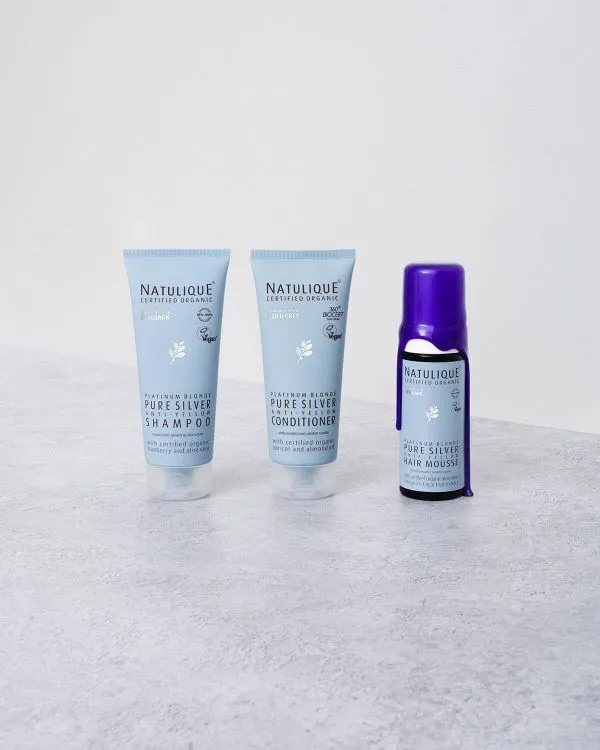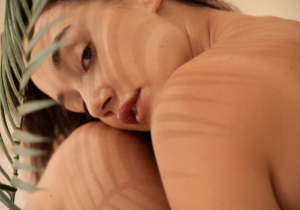Introduction to vegetable coloring
The demand for natural, eco-friendly beauty products continues to grow. Leading this trend is vegetable coloring has established itself as a gentle, effective alternative to traditional chemical products. But what exactly is vegetable coloring, and what are its origins and principles? Let's decipher together this fascinating universe where nature and beauty intertwine to sublimate hair while preserving its health.
Definition of vegetable coloring
Visit vegetable coloring is a hair dyeing method that uses dyes of natural origin, mainly from plants, to color the hair fiber. Unlike chemical colorants, these dyes do not penetrate the hair fiber, but rather coat the hair shaft, offering extra protection. They are generally free from harsh chemicals such as ammonia, parabens and resorcinols, making coloring significantly gentler on the scalp and hair health.
History and origins of vegetable hair dyes
Plant dyes are not new; they date back to ancient times. The Egyptians and Romans were already using plant powders to beautify their hair. Henna, derived from the Lawsonia inermisis probably the most emblematic and ancient of these practices, used for over 5,000 years for its coloring and fortifying properties. This tradition has been perpetuated in many cultures around the world, highlighting an approach to beauty that respects both the environment and human health.
The differences between chemical and vegetable dyes
The main distinction lies in their composition and action on the hair. While chemical colorations penetrate the hair fibre by opening the hair scales to deposit the pigment, which can lead to undesirable side effects such as dryness or irritation. plant-based colorantsare surface-active. The colored film thus deposited naturally strengthens and protects the hair fiber without altering its internal structure. This approach greatly reduces the risk of allergy and preserves hair vitality.
The different types of vegetable colorants available
With the growing popularity of natural cosmetics, the range of plant-based colorants has expanded. Here are the main options available on the market:
Henna coloring
Henna is the most popular choice among plant-based colorants. Known for its warm, coppery shades, this leaf powder also strengthens and adds volume to hair.
Indigo coloring
Indigo, extracted from the plant Indigofera tinctoriaIt is used to obtain darker shades such as brown or black. Often combined with henna, it offers a vast palette of colors while adding shine and depth.
Amla coloring
Amla, or Indian gooseberry, is often added to henna blends for its color-intensifying and conditioning properties. It is known for its antioxidant powers, and boosts overall hair health while adding shine and softness.
The benefits of vegetable coloring
Benefits for healthy hair
Choose a vegetable coloring offers a range of benefits for hair health. Using natural ingredients, these dyes help maintain healthy, vigorous hair.
Nutritional benefits for hair
Visit plant-based colorants are rich in essential nutrients that deeply nourish hair. Plants such as henna, indigo and amla provide vitamins and minerals beneficial to the hair shaft. They help not only to color, but also to strengthen hair, reducing breakage and split ends.
Antioxidant and anti-inflammatory benefits
The ingredients used in plant-based colorants have antioxidant properties that protect hair from damage caused by free radicals. What's more, the anti-inflammatory benefits of certain plants, such as amla, relieve scalp irritation, offering increased comfort, especially for those with sensitive scalps.
Benefits for the scalp
Visit plant-based colorants not only protect and nourish hair, they also benefit the scalp, encouraging a healthy environment for hair growth.
Support for scalp conditions
Regular use of plant-based colorants can improve scalp condition. Natural dyes, free from harsh chemicals, reduce the risk of itching, dandruff and redness. They also balance the scalp's pH, which can help alleviate problematic skin conditions.
Stimulates hair growth and prevents hair loss
A healthy scalp is essential for hair growth. Visit plant-based colorants stimulate hair follicles, promoting growth and preventing excessive hair loss. The plant extracts used improve blood circulation to the scalp, ensuring better oxygenation and nutrition of growing hair.
Positive environmental impact of plant dyes
In addition to the health benefits for the hair and scalp, the plant-based colorants have a positive impact on the environment. They represent a sustainable and ecological option in the field of hair cosmetics.
- Renewable resources: The ingredients used in plant-based colorants come from renewable sources, such as plants, thus reducing dependence on synthetic chemicals.
- Less pollution: By avoiding the toxic residues of chemical dyes, the plant-based colorants reduce pollution of waterways and soils.
- Eco-responsible packaging: Many manufacturers of plant-based colorants adopt sustainable packaging practices, favoring recycled materials and reducing over-packaging.
In conclusion, opting for a vegetable coloring is a wise choice for those who want to preserve the health of their hair while making a positive contribution to the environment. With their many advantages, these natural dyes are a serious alternative that respects both hair and the ecosystem.
See also: Color and sun: how to protect your hair?
Application tips for plant-based hair color
Preparing hair for coloring
Before applying a vegetable coloringIt's essential to prepare your hair for optimal results. Good preparation ensures better adhesion of natural pigments and uniform, long-lasting color.
Cleaning hair
To remove any build-up of hair products, sebum or impurities, wash your hair with a mild shampoo, ideally one that is silicone- and sulfate-free. A clean scalp helps plant dyes to set more effectively.
Drying and detangling
After washing, gently blot your hair with a towel to remove excess water. Slightly damp hair makes it easier to apply the vegetable coloring. Make sure they are well untangled to avoid knots that could interfere with color diffusion.
Application procedure
Mixture preparation
Follow the manufacturer's specific instructions for preparing your dye. Generally, henna, indigo or amla powders are mixed with hot water to form a homogeneous paste. To enrich this preparation, you can add a few drops of nourishing essential oils.
Uniform application
Wear gloves to avoid staining your hands. Divide your hair into sections for easier application. Start at the roots and work down to the lengths, making sure to cover each strand evenly. Use an applicator brush or your fingers to distribute the mixture evenly.
Application time and rinsing
Respecting break times
The pause time may vary according to the recipe, but it is generally advisable to let the vegetable coloring 1 to 4 hours. Cover your hair with a plastic cap to maintain heat and help the color set.
Rinse and post-color care
Rinse hair thoroughly with lukewarm water until the water runs clear. Avoid shampooing immediately after coloring to avoid altering the color. You can apply a mild conditioner to facilitate detangling and seal cuticles.
Care for plant-based hair color
Tips for prolonging color
Opt for hair care products specially formulated for color-treated hair. Sulfate-free shampoos and nourishing moisturizers protect your color and nourish your hair. Wash your hair in cold water to prolong the life of plant pigments.
Frequency of touch-ups
The sustainability of plant-based colorants is variable, depending on hair type and shade. On average, to maintain a vibrant color, a touch-up every 4 to 6 weeks is recommended.
Apply a vegetable coloring requires meticulous preparation and attention to detail to achieve the best results. With these tips, you can enjoy natural, healthy, radiant color while respecting the health of your hair and the environment.
Frequently asked questions about vegetable coloring
What's the best plant color to cover white hair?
The best color depends largely on your natural hair color and the desired effect. However, henna in combination with indigo is often recommended for good coverage of white hair, producing shades from brown to black.
Can vegetable coloring damage my hair?
Vegetable-based hair color is generally harmless and does not damage the hair. It does not penetrate the hair fiber, but rather envelops it, preserving the hair's health and natural structure.
Can I use plant-based hair color at home?
Yes, it's perfectly possible to make vegetable hair color at home. However, following the product instructions carefully and preparing the hair correctly is crucial to achieving good results.
How long does plant-based hair color last?
The duration of a vegetal hair color depends on the shade chosen and the frequency of washing, but generally ranges from 4 to 6 weeks. Regular touch-ups help maintain the color's radiance.
Is vegetable coloring suitable for all hair types?
Yes, vegetable color is suitable for all hair types, whether fine, thick, curly or straight. Thanks to its natural ingredients, it adapts well to hair texture without causing damage.
Conclusion
Botanical hair color offers a natural and beneficial alternative to traditional chemical dyes. Not only does it beautify hair with vibrant, natural colors, it also preserves hair health by relying on gentle, nourishing ingredients. The benefits extend from hair health to positive environmental impacts, making this practice an excellent option for consumers concerned about their well-being and the planet. Thanks to the advice and information provided, you can now explore the powerful and attractive world of plant-based colorations with confidence.





